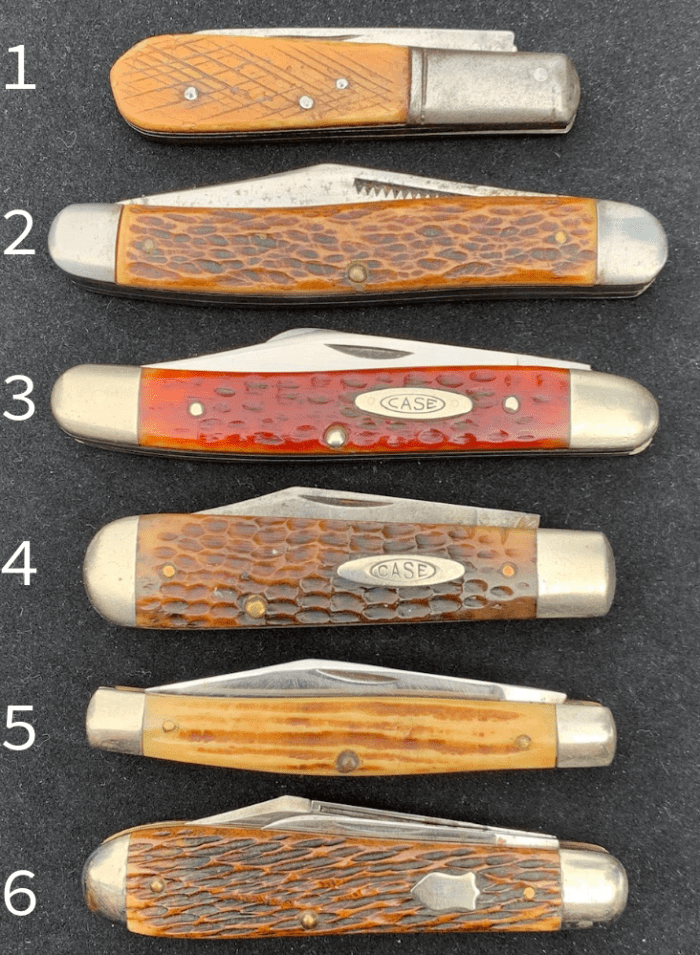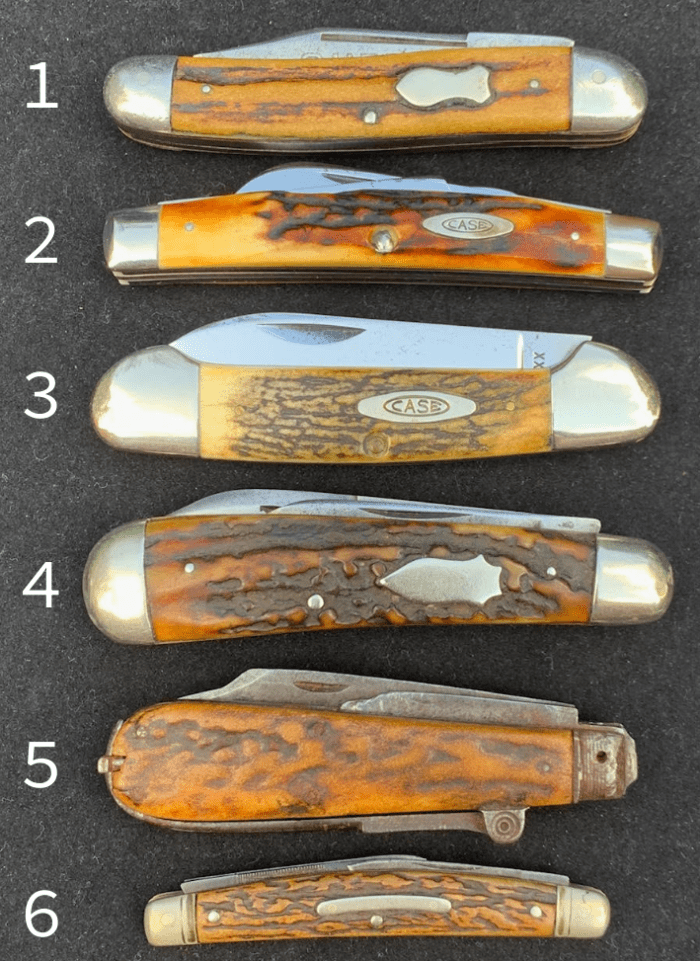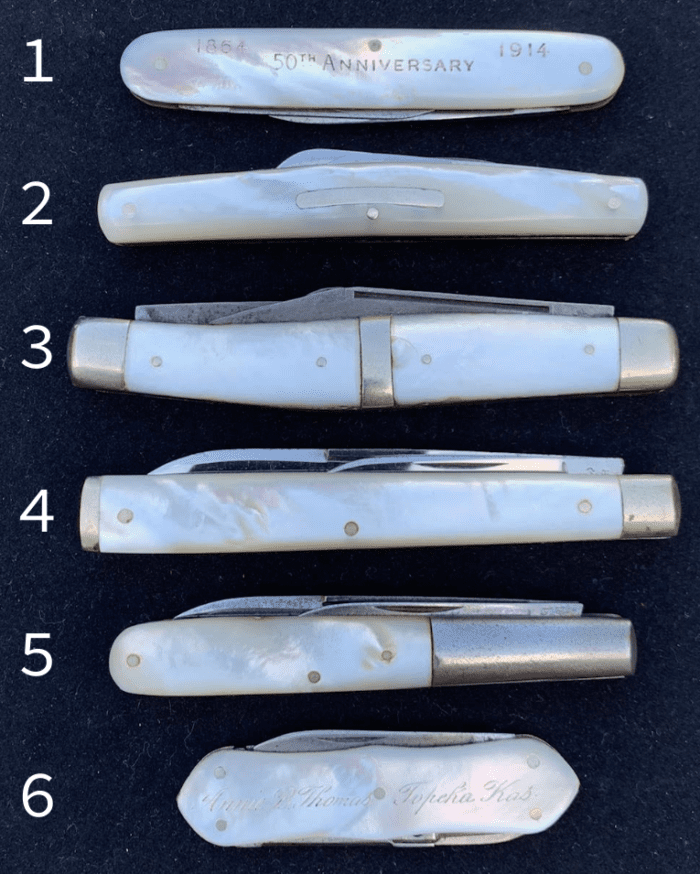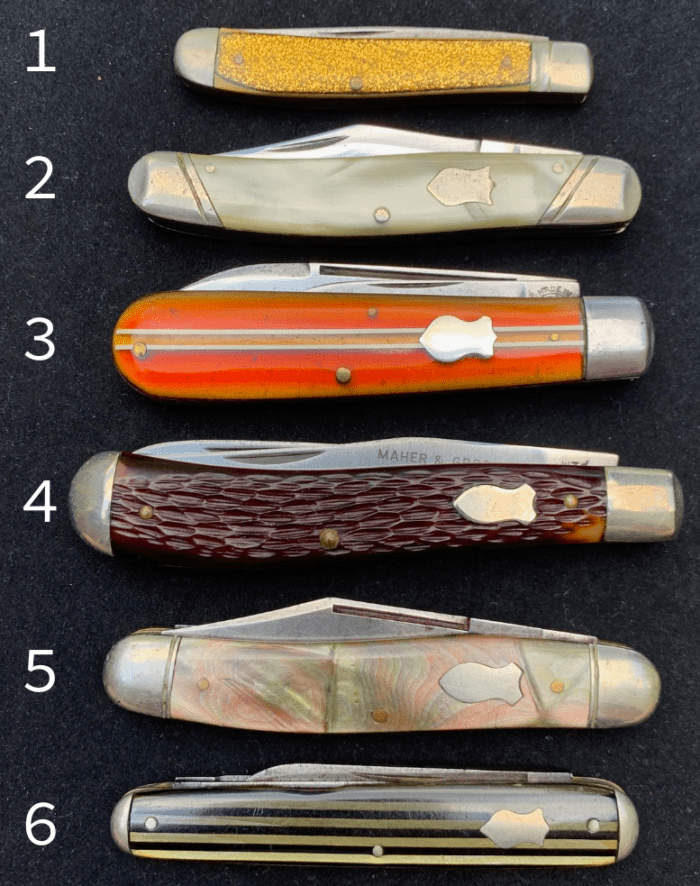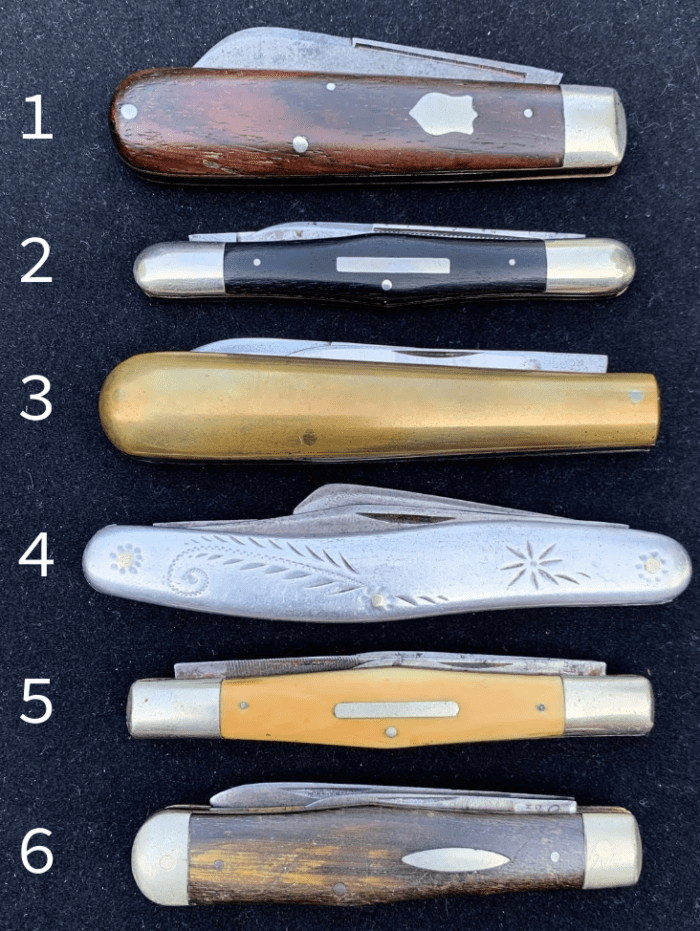Guide to Collecting Pocket Knives, part IV
Thanks for checking out my guide to collecting old pocket knives. I hope you find this information useful and enjoy the content. The following may contain affiliate links.
Handle Materials
The handles on a pocket knife are the most interesting part in my opinion. They are either natural or synthetic materials and they give the knife its character. Some materials are prone to cracking or shrinking while others are much more sturdy and utilitarian. Damage to handles can be patched or the entire slab can be replaced but there is nothing like finding a knife with jigged bone handles free from cracks. Here is a list of handle materials you may encounter as you collect:
Bone
Bone handles have been used on pocket knives for hundreds of years. They offer a natural, plentiful and fairly durable cover for jack knives from the shin bone of cattle. Early on, bone handles were smooth and some were scored with different patterns. It wasn’t until the late 1800s when the process of jigging by machine was incorporated to add small dimples and gouges to the handle. There is a wide variety of bone handles that collectors look for, including Winterbottom (mostly used by Queen), Rogers bone (used by Remington and Pal), Green Bone (Case XX), 2nd Cut Stag and more.
- Scored Bone – (unmarked Barlow)
- Rogers Bone – story (Pal)
- Red Bone – (Case XX USA 10 Dot).
- Green Bone – (Case Tested XX).
- Winterbottom Bone – background (Queen).
- Peach Seed Bone – (Schrade Cut Co).
Stag
Stag handled pocket knives are widely collected and have been used on cutlery for hundreds of years. Genuine stag handles are those cut into slabs from the outside part of deer antlers. They feature raised areas and deeper grooves that show distinctive light and dark areas. Stag handles are much more durable than jigged bone handles, which can chip quite easily when dropped. Variations include red stag and 2nd cut stag (scored inner part of antler) frequently used by Case but nothing beats the look of the real thing!
Although I love bone handles, stag handles are my favorite handle material due to the warm, natural coloration and the bumpy texture that looks cool and feels good in the hand!
- Stag – (Henry Sears & Co Prussia)
- Snake skin stag – (Case XX USA)
- Red Stag – (Case XX USA).
- Gnarly Stag – (Humason & Beckley).
- Stag – (Unmarked 1700’s Sheffield).
- Stag – (Union Knife Co Naugatuck).
Mother of Pearl
Another natural material that is featured on the handles of many vintage pocket knives is mother of pearl. Mother of pearl, or nacre, is harvested from the inside of certain mollusks, including pearl oysters, freshwater mussels, and abalone. It’s function serves to protect the inside of the shells of these creatures from parasites and other irritants. Mother of pearl is cut into slabs and added to the handles of pocket knives to give them a shiny, iridescent look.
- Mother of Pearl – (Wostenholm)
- Mother of Pearl – (Cattaraugus Cut Co)
- Mother of Pearl – (Salt Lake City Hardware Co)
- Mother of Pearl – (Maher & Grosh)
- Mother of Pearl – (Challenge)
- Mother of Pearl – (J.A. Henckels)
Synthetic Material
Synthetic pocket knife materials have been on pocket knife handles, offering various advantages over traditional materials like wood or bone. Celluloid, one of the earliest synthetic materials used in pocket knife handles, is lightweight and offers excellent aesthetics due to its ability to be easily dyed and molded into intricate patterns. However, its flammability and tendency to shrink over time have led to its decreased usage. Delrin, a thermoplastic material, gained popularity in the 1950s due to its exceptional durability, moisture resistance, and the fact that it was cheaper to produce than jigged bone. Micarta is a synthetic material that has become a popular choice on modern knives due to its long term durability.
- “Goldstone” Celluloid – (Utica)
- Yellow swirl Celluloid – (Utica)
- Red stripe Celluloid Red – (Remington).
- Jigged Delrin – (Schrade Walden / Maher & Grosh).
- Pyralite Celluloid – (Schrade Cut Co).
- Green & Black stripe Celluloid – (Challenge Cut Co).
Miscellaneous Materials
There are other handle materials that you may encounter including wood, ivory, horn as well as metals like aluminum and brass. Wood, mostly Ebony (Africa) and Cocobolo (Central America), was a popular choice from the 1860s – 1930s. Ivory was used as a premium handle material, mostly on fancy, formal knife patterns, and was mainly used in the 1800’s. Ivory appears similar to smooth bone except it has a fine grain and lacks the pores of bone. It also has exceptional hardness. Buffalo horn is a durable handle material that at first glance looks like wood but can be transparent in some places and has a distinctive grain. Sometimes horn handles show small holes throughout the handles, giving a Swiss cheese like appearance. This is caused by a specific beetle (dermistid) whose larvae will eat and bore holes through the horn.
- Cocobolo wood – (Leonard).
- Ebony wood – (Phoenix Knife Co).
- Brass – (Southington Cut Co).
- Aluminum – (Hibbard, Spencer, Bartlett & Co).
- Ivory – (Northfield Knife Co).
- Horn – (Jonathon Crookes).

